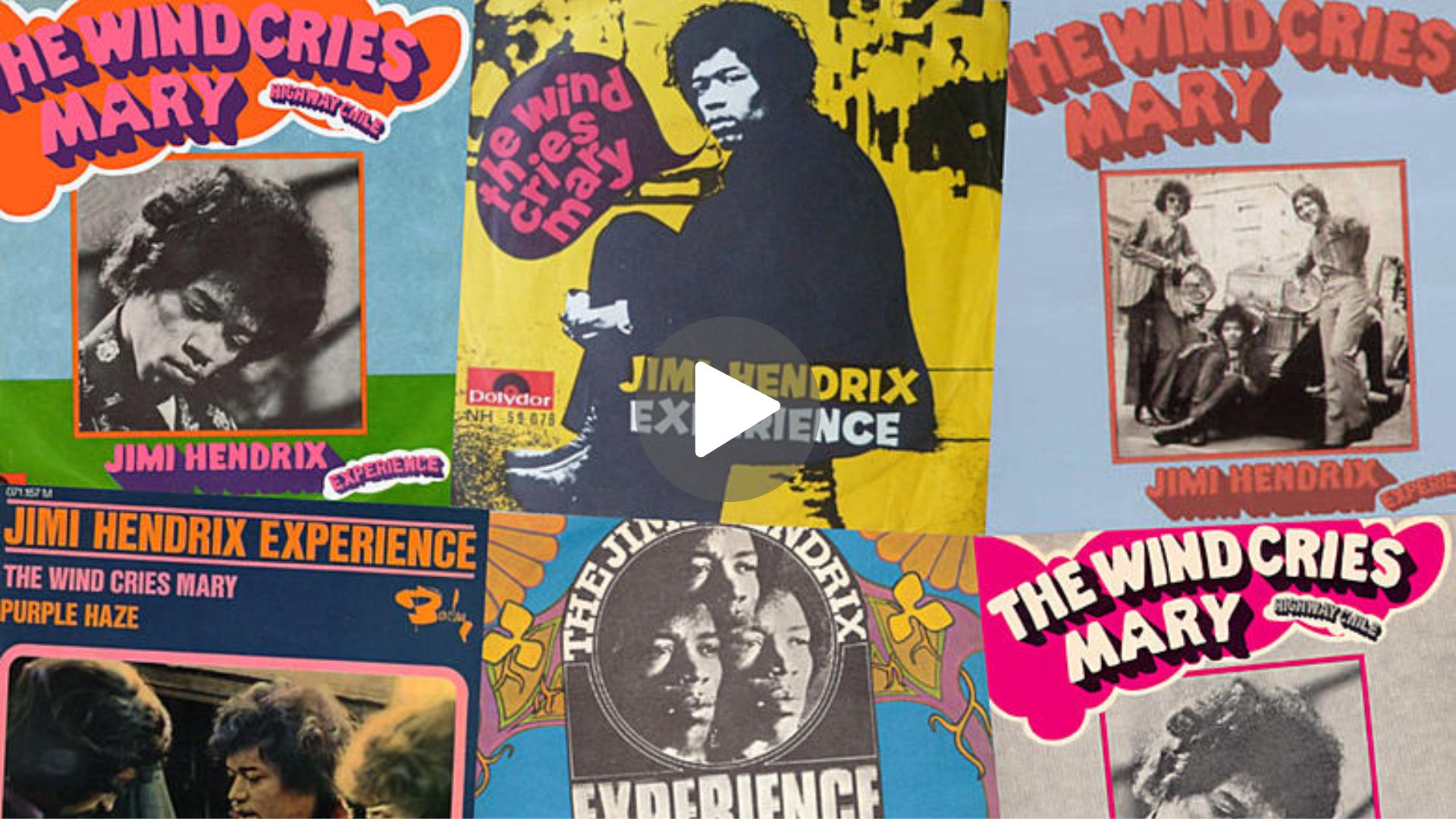Released as a single in 1967, “The Wind Cries Mary” quickly became a classic, cementing Jimi Hendrix’s place as one of rock’s greatest innovators. While Are You Experienced was a groundbreaking album, this track stood out because of its soulful and melancholic tone, setting it apart from the more experimental or psychedelic tracks on the album. The song features a slower, more blues-influenced rhythm, paired with the ethereal sound of Hendrix’s guitar, which drifts alongside the haunting lyrics. The lyrics themselves are deeply personal, reflecting on loss, regret, and the passing of time. Hendrix’s use of the wind as a metaphor for memory and loss adds a layer of wistfulness to the song, and the repeated line, “The wind cries Mary,” evokes a sense of longing and sorrow.
Musically, “The Wind Cries Mary” is built around a simple yet haunting chord progression, with Hendrix’s guitar work giving it a rich, emotional depth. His use of space in the arrangement—where the pauses between the notes are as important as the notes themselves—creates a sense of melancholy that mirrors the introspective nature of the lyrics. The track also features Mitch Mitchell’s jazzy drumming and Noel Redding’s steady bassline, providing a solid foundation for Hendrix’s emotive guitar work to shine. This mix of blues, rock, and jazz influences set “The Wind Cries Mary” apart from much of the pop music of the time, marking a pivotal moment in the evolution of rock music.
“The Wind Cries Mary” has been widely regarded as one of Jimi Hendrix’s most accessible songs, appealing not only to fans of his more experimental work but also to those who appreciate his capacity for lyrical vulnerability. Its emotional depth and stripped-down arrangement resonated with listeners, making it a fan favorite and a critical success. The song’s delicate balance of personal storytelling and musical innovation exemplifies Hendrix’s genius, proving that he was not only a guitar virtuoso but also a gifted songwriter with an ability to connect with his audience on a deeply emotional level.
In terms of cultural impact, “The Wind Cries Mary” contributed to the growing influence of Hendrix on both rock and popular music. The 1960s were a time of social upheaval, and songs like this, with their introspective and sometimes cryptic lyrics, resonated with a generation searching for meaning in the midst of turbulent times. Hendrix’s ability to combine the personal with the universal allowed his music to speak to listeners from all walks of life, creating a sense of shared experience. The song’s reflective tone also aligned with the broader countercultural movement, which sought to explore deeper emotional and philosophical questions through music.
While “The Wind Cries Mary” did not achieve the same level of commercial success as some of Hendrix’s other singles, such as “Purple Haze” or “Hey Joe”, it has remained a key part of his musical legacy. It is often hailed as one of the most poignant tracks in his catalog, showcasing his ability to convey deep emotion through both his lyrics and his guitar work.
In conclusion, “The Wind Cries Mary” is a timeless classic that demonstrates Jimi Hendrix’s musical range and emotional depth. Released in 1967 as part of Are You Experienced, the song captures a moment of personal loss and reflection, offering a more intimate glimpse into the mind of one of rock’s most iconic figures. Through its soulful melody, poetic lyrics, and distinctive guitar work, “The Wind Cries Mary” continues to resonate with audiences, solidifying Jimi Hendrix’s place as one of the greatest and most influential musicians in rock history.

